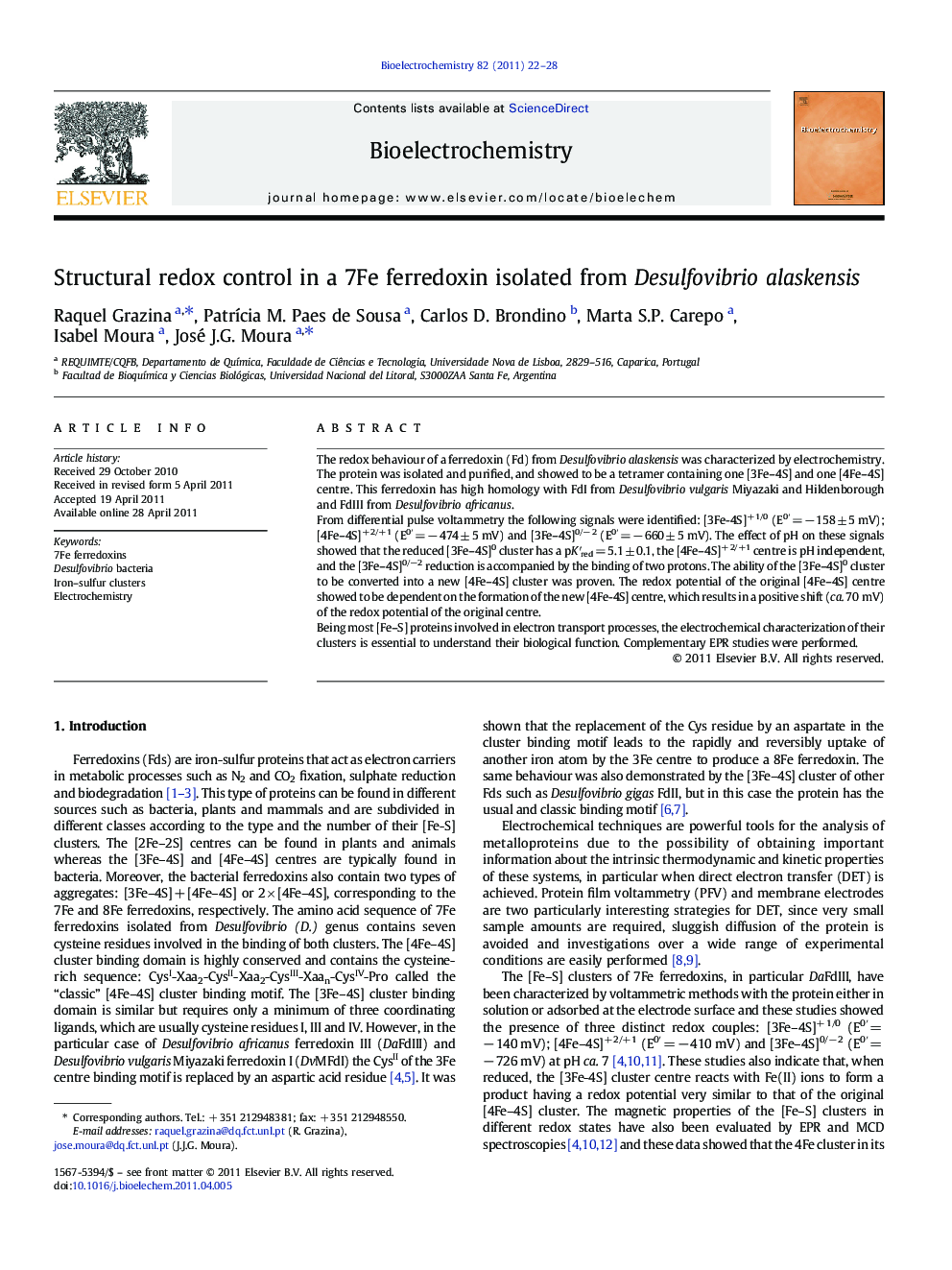| Article ID | Journal | Published Year | Pages | File Type |
|---|---|---|---|---|
| 1274605 | Bioelectrochemistry | 2011 | 7 Pages |
The redox behaviour of a ferredoxin (Fd) from Desulfovibrio alaskensis was characterized by electrochemistry. The protein was isolated and purified, and showed to be a tetramer containing one [3Fe–4S] and one [4Fe–4S] centre. This ferredoxin has high homology with FdI from Desulfovibrio vulgaris Miyazaki and Hildenborough and FdIII from Desulfovibrio africanus.From differential pulse voltammetry the following signals were identified: [3Fe-4S]+ 1/0 (E0′ = − 158 ± 5 mV); [4Fe–4S]+ 2/+1 (E0′ = − 474 ± 5 mV) and [3Fe–4S]0/− 2 (E0′ = − 660 ± 5 mV). The effect of pH on these signals showed that the reduced [3Fe–4S]0 cluster has a pKʹred′ = 5.1 ± 0.1, the [4Fe–4S]+ 2/+1 centre is pH independent, and the [3Fe–4S]0/−2 reduction is accompanied by the binding of two protons. The ability of the [3Fe–4S]0 cluster to be converted into a new [4Fe–4S] cluster was proven. The redox potential of the original [4Fe–4S] centre showed to be dependent on the formation of the new [4Fe-4S] centre, which results in a positive shift (ca. 70 mV) of the redox potential of the original centre.Being most [Fe–S] proteins involved in electron transport processes, the electrochemical characterization of their clusters is essential to understand their biological function. Complementary EPR studies were performed.
Graphical AbstractFigure optionsDownload full-size imageDownload as PowerPoint slideResearch Highlights► D. alaskensis Fd is a 7Fe protein containing one [3Fe–4S] and one [4Fe–4S] cluster. ► The [3Fe–4S]0 cluster can be converted into a new [4Fe–4S] cluster. ► E0ʹ of the original [4Fe–4S] centre depends on the formation of the new 4Fe centre.
